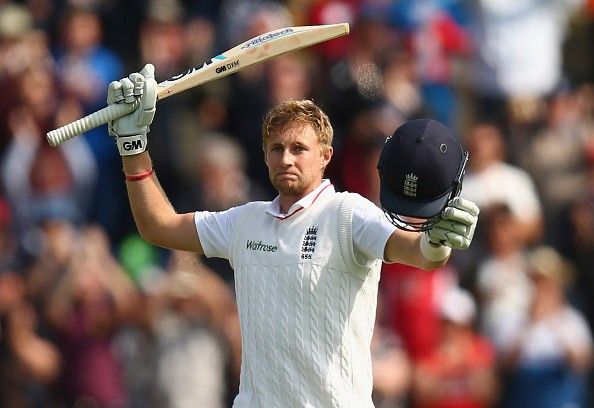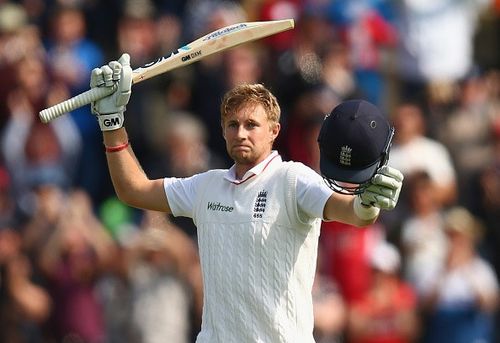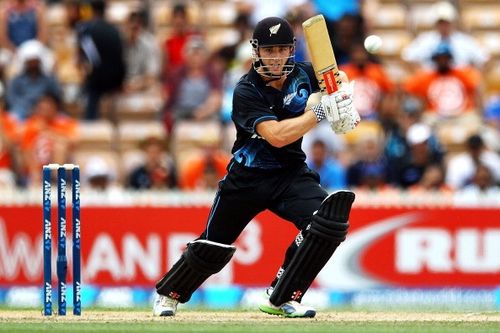
Statistical comparison of Joe Root and Kane Williamson

Today’s youngsters are tomorrow’s legends. In the game of cricket, where both criticism and praise are heaped equally on players, it is rare to see people who perform head and shoulders above their counterparts. In a game where matches can be won and lost with a moment’s indecision, with a huge crowd roaring in your ears, where pressure meets temperament and hard work is the key, only the best show the grit and moral fibre to keep going despite the obstacles.
They are the players who set the benchmark of performance, whom others can merely look up to and only hope to replicate – Don Bradman, Sachin Tendulkar, Brian Lara and Muttiah Muralitharan are some examples of such players. But their era is long over, and cricket, as usual needs a new set of players to take over.
When the going gets tough, the tough get going. Cricket is never short of players who are ready to take the game by the scruff of the neck, and true to its nature, players who are predicted to be legends tomorrow have already taken the centre stage. Led by batting giants such as AB De Villiers, Hashim Amla and Brendon McCullum, the future of cricket is in safe hands.
But in the long run, it is up to cricket’s youngsters to take the game forward, and currently, the bet is strongly on a set of four, namely Virat Kohli, Kane Williamson, Joe Root and Steven Smith.

Of the four players, two stand out – Williamson and Root. They are the elite, the metaphorical batting behemoths who lead the statistical tables and score runs at will. Williamson, a quiet top-order batsman, burst onto the scene with a century on debut against India. With his quick feet and ability to play the ball late, Williamson prefers to construct large innings by standing his ground and playing orthodox cricketing shots.
On the other hand, Joe Root is a product of the new brand of cricket, mixing traditional batting methods with innovative feet movement. He is flashy but solid, aggressive but mature and elegant in strokeplay. Root’s disdain while playing the fastest bowlers in the world was on display as he smashed Johnson and Starc around the English grounds.
Though Kohli and Smith are not far behind them, Root and Williamson are the table toppers – for now. Let’s take a look at their individual numbers across all formats:
Career Statistics
Overall Numbers in Tests
|
Name |
Matches |
Runs |
Average |
Highest |
100/50s |
|
Joe Root |
32 |
2733 |
54.66 |
200* |
8/13 |
|
Kane Williamson |
41 |
3199 |
45.70 |
242* |
10/15 |
A quick look at the numbers might suggest that Root is a shade better, with an average of almost 10 runs more than Williamson. But certain factors must be considered, such as the fact that Williamson has played 74.6% of his innings in the No.3 position, where he is more vulnerable to the swinging ball, while Root has played 70.6% of his innings in positions 4, 5 and 6, where he would not have faced a new ball right at the start.
Williamson has centuries against all Test-playing teams except Australia and Zimbabwe while Root has centuries against all 5 teams he has played against - Australia, India, New Zealand, Sri Lanka, and West Indies.
Overall Numbers in ODIs
|
Name |
Matches |
Runs |
Average |
Highest |
100/50s |
|
Joe Root |
59 |
2076 |
42.36 |
121 |
6/9 |
|
Kane Williamson |
85 |
3362 |
48.02 |
145* |
7/21 |
While it is true that Williamson took his time to get going in ODIs – 74 innings for a century against a team in the Top 8 – he soon found his groove, steadily increasing his average over the years. He averaged 67.50 in 2011 and 41.18 in 2013, before getting into the zone and hitting 70.00 in 2014 and 57.26 so far in 2015.
On the other hand, Root quickly found his stride with half centuries against India and New Zealand in his first two series, before scoring his first century against South Africa in his first year. But his average has not risen as dramatically as Williamson’s – after a sedate 39.12 in his debut year of 2013, the rise in average has been slight, with 43.60 in 2014 and 44.46 so far in 2015.
Root has a relatively better 50-to-100 conversion rate when compared to Williamson, who has 21 scores between 50 and 99, including 6 scores in the nervous nineties.
Home and Away Records
Records at Home (All forms of International Cricket)
|
Name |
Matches |
Runs |
Average |
Best |
100/50s |
|
Joe Root |
52 |
3027 |
50.45 |
200* |
10/13 |
|
Kane Williamson |
53 |
2783 |
49.69 |
242* |
5/18 |
Root has the upper hand over Williamson at home, having played only one match less than the latter but still managing to score 200 runs more. Both batsmen have their best scores at home though Williamson’s inability to convert half centuries into hundreds is again a worrying prospect.
While Williamson has fared best against Sri Lanka at home, scoring 748 runs at 93.50 against them, Root seems to prefer playing India the best, scoring 714 runs at 64.90. Both batsmen have good records against the other’s team – Williamson has an average of 48.00 against England while Root has an average of 52.76 against New Zealand.
Both players have had a very productive year, with Root scoring 985 runs at 57.94 and Williamson scoring 940 runs at 72.30. Joe Root prefers batting first to fielding first, as his average is 56.00 in the former and 44.10 in the latter. Williamson, on the other hand, doesn’t seem to show favoritism - his averages for both instances are equally impressive – 50.05 and 49.05.
Record Away from home (All forms of International Cricket)
|
Name |
Matches |
Runs |
Average |
Best |
100/50s |
|
Joe Root |
49 |
2033 |
45.17 |
182* |
4/11 |
|
Kane Williamson |
98 |
4362 |
41.94 |
192 |
12/20 |
It has to be kept in mind that Williamson has played double the matches that Root has played away from home, which explains his dip in average. Neither batsman has a double century away from home, though both have come close - Root in particular has two scores in the 180s. But when it comes to centuries, Williamson is miles ahead of Root. Williamson has scored 12 out of his 17 international centuries away from home, while Root has only 4 centuries away out of a total of 14.
Against top-ranked teams, Root has been comfortable against India and Sri Lanka on tricky, subcontinent pitches. This is a very impressive stat, as most players from outside the subcontinent find it hard to adapt to the foreign conditions. Root has an average of 64.00 in India and 73.40 in Sri Lanka, scoring 823 runs in 14 matches against them. On the other hand, Williamson has been poor in both countries, averaging only 33.42 in India and a miserable 20.00 in Sri Lanka.
But Williamson makes up for it in the UAE – where Root has not played yet – with 639 runs at an average of 58.09 against a strong Pakistan attack which is virtually unbeatable at their new home. Williamson has two centuries and two fifties as well against them.
Surprisingly, both batsmen have Australia as their prime nemesis – Root only averages 23.63 down under with three fifties, while Williamson fares even more poorly, with 16.80 and no scores of over fifty.
Once again, the last two years have been particularly good for both batsmen. Root averages 44.80 last year and 50.92 this year. Williamson’s average, though more in both cases, has decreased – from 59.71 in 2014 to 52.47 in 2015.
In terms of runs scored, Williamson has been much more prolific over the last two years, with 2251 runs while Root only has 1334 runs away from home. Williamson’s game has evolved over time to adjust to conditions and bowling, but Root has played with more or less the same technique, which has resulted in his runs drying up somewhat.
Runs in Winning Causes
Ask any cricketer, and they would tell you that a win for the team trumps a personal achievement any day. But it is the mark of an excellent player who builds on personal landmarks and converts it into a win for his team, either with a terrific century or a good spell of bowling. In Test matches where Williamson and Root have scored more than their respective averages, let’s see how many times their teams have won.
Contributions to a Test win (Criteria: Scored more than test average)
|
Player |
Wins (Total wins by respective team) |
Runs |
Average |
100/50 |
Highest |
|
Joe Root |
11 (13) |
1388 |
126.18 |
6/7 |
182* |
|
Kane Williamson |
10 (13) |
1355 |
123.18 |
6/5 |
242* |
A quick overview of the stats shows surprising similarities. While Williamson has contributed to 10 wins, Root has taken England over the line on 11 occasions. The runs which are scored by each batsman in wins are also quite similar, as is the number of centuries.
Out of the 42 Tests that New Zealand has played since Williamson’s debut, they have won 13 of them, with Williamson playing a major role in 10 of those – 77% of matches. Root’s stats are similarly terrific – out of 13 matches that England has won since his debut, Root has played a major role in 11 of them – 84.6%.
A quirky statistic is that out of the 11 matches that Root has led England to victory, 10 have come in England. Only 1 match has been won outside the United Kingdom with Root making a big score. However, Williamson has led New Zealand to victory in Sri Lanka, the UAE, West Indies and Zimbabwe, apart from at home. With England playing more games away from home in the coming years, it will be interesting to see Root’s contribution to winning causes.
Contribution to ODI wins (Criteria: Scored more than ODI average)
|
Player |
Wins (Total wins by respective team) |
Runs |
Average |
100/50 |
Highest |
|
Joe Root |
9 (28) |
754 |
150.80 |
5/1 |
113 |
|
Kane Williamson |
17 (49) |
1530 |
102.00 |
5/12 |
145* |
Williamson leaves Root behind in the dust in ODIs with respect to contributions in wins. While Root has played a major role in 9 English wins with 5 centuries and one fifty, Williamson’s record is almost double, with no less than 17 wins.
Once again, Williamson’s penchant for scoring fifties is his best quality, with 17 scores of fifty or more compared to Root’s 6. Of England’s 9 wins thanks to Root, 5 have come at home while 4 have come away from home. For New Zealand, 9 of their 17 wins have come at home while the rest have come away.
Out of 41 matches that New Zealand has won since Williamson’s debut, he has played a major role in 17 of them – 36.1% of the total. Root’s numbers are similar – out of 24 wins for England since Root’s debut, he has led them in 9 instances – 37.5%. It is evident that both Root and Williamson play a major role in at least 1/3rd of their team’s victories, which is definitely the numbers of future legends.
To put it in perspective, out of India’s 307 wins during Sachin Tendulkar’s era, he has led India to victory in 134 matches by scoring a half-century or more - or 43.6%. With this as a precedent, it is safe to say that both Root and Williamson are on the way to becoming modern batting greats.

Final Say
While Williamson’s and Root’s numbers are in no way carbon copies, there are a few talking points. Though Williamson has had a head-start over Root in ODIs, he has managed to steadily increase his ODI average over the years, from 41.18 in 2013 to 57.26 in 2015. Root’s ODI average has been steadily rising as well, from 39.12 in 2013 to 44.46 in 2015, but it is not as steep as Williamson’s curve.
In Tests though, both batsmen are more or less the same, with Root having a higher average thanks to his position in the batting order. Both batsmen have similar numbers in wins as well, contributing 1/3rd of the total wins of their respective teams.
Williamson’s away record is much better than Root’s though, as the former has 12 international centuries away from home when compared to Root’s 4, but this can be attributed to the fact that Williamson has been playing international cricket for 3 years more than Root, and has had the opportunity to play more series away from home.
When coming to performances against individual teams, Root has faced 5 teams and scored centuries against all 5 of them, while Williamson is yet to score a century against Australia and Zimbabwe among Test-playing nations. Both batsmen have abysmal records in Australia, averaging less than half of their normal averages. They must look to improve upon them in future series, particularly when their immediate rivals – Steven Smith and Virat Kohli have terrific records Down Under.
To conclude, both Root and Williamson have affirmed their position as future legends. Though they have only been playing for half a decade – just 2 years in the case of Root – they have been instrumental in their team’s wins over the past few years. As both teams are set to play more and more in the coming years, it will be up to these batsmen to make sure they continue to perform well so that their names will be set in stone.